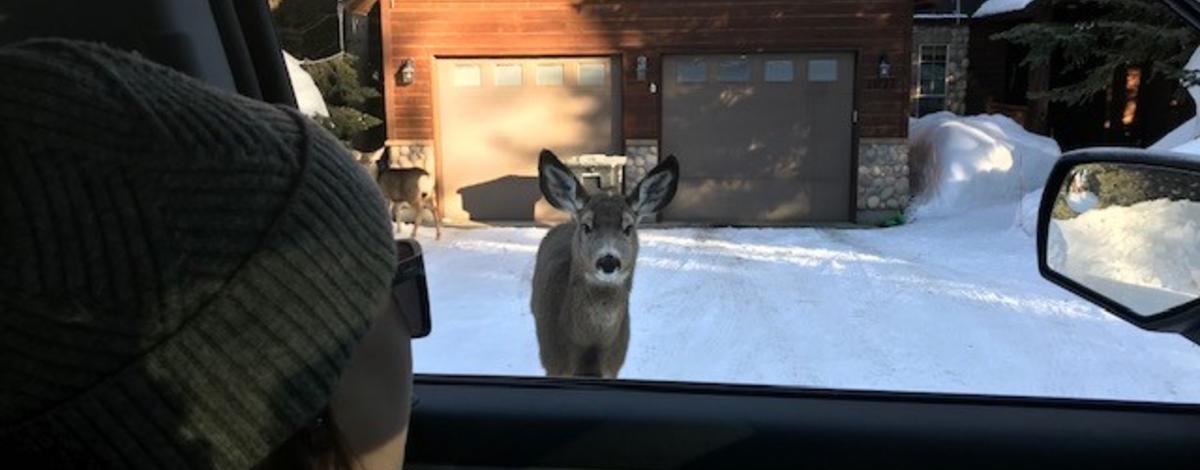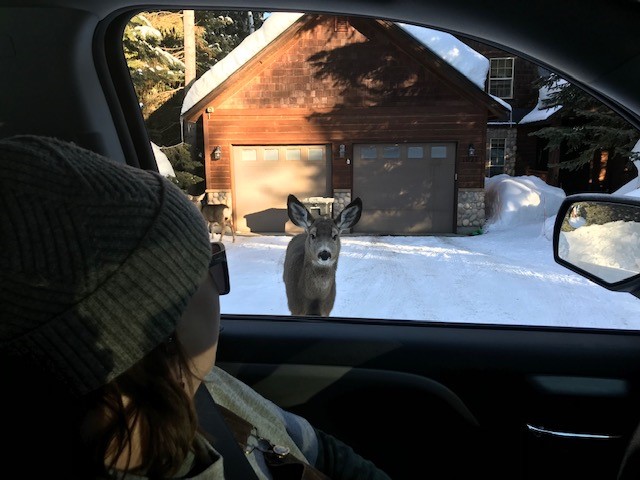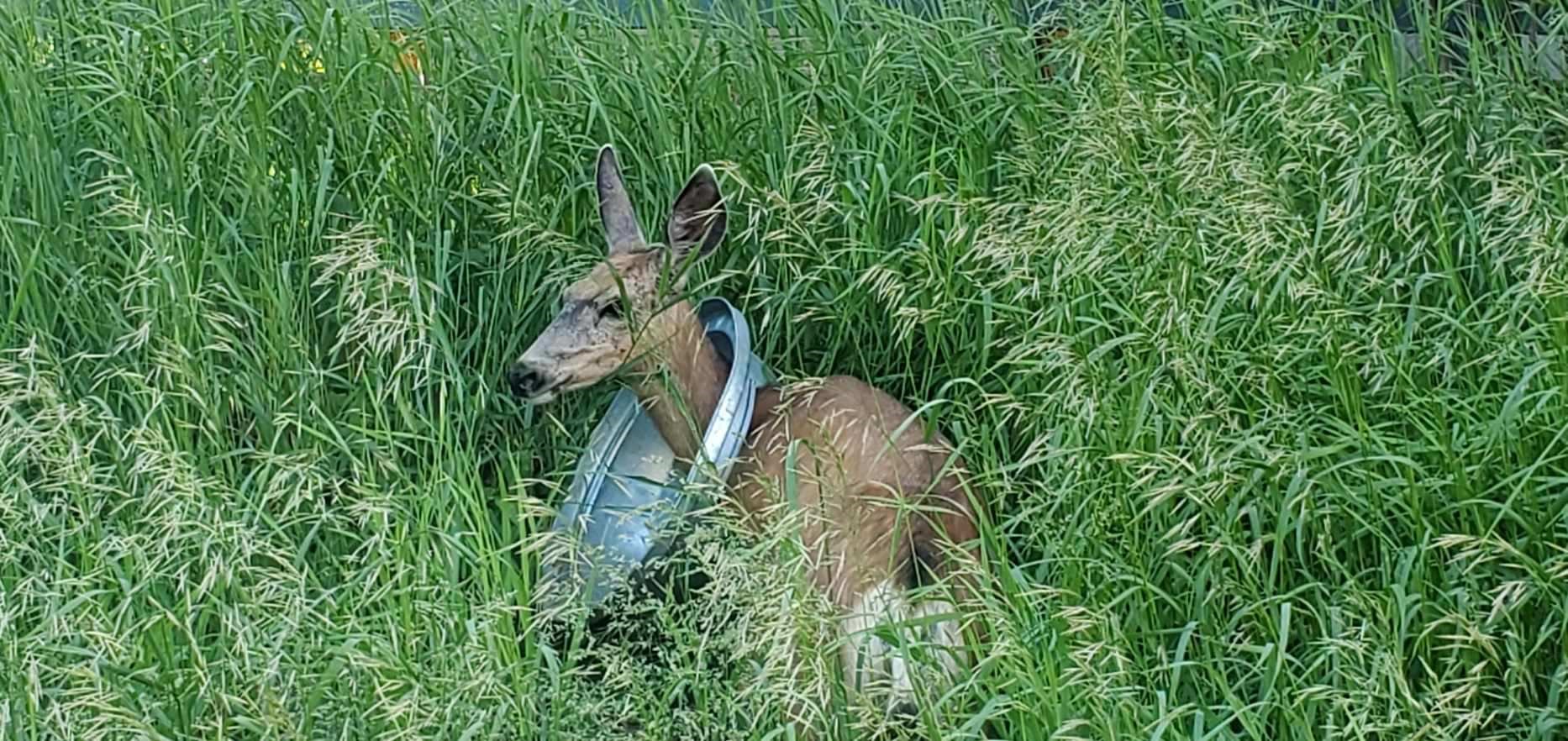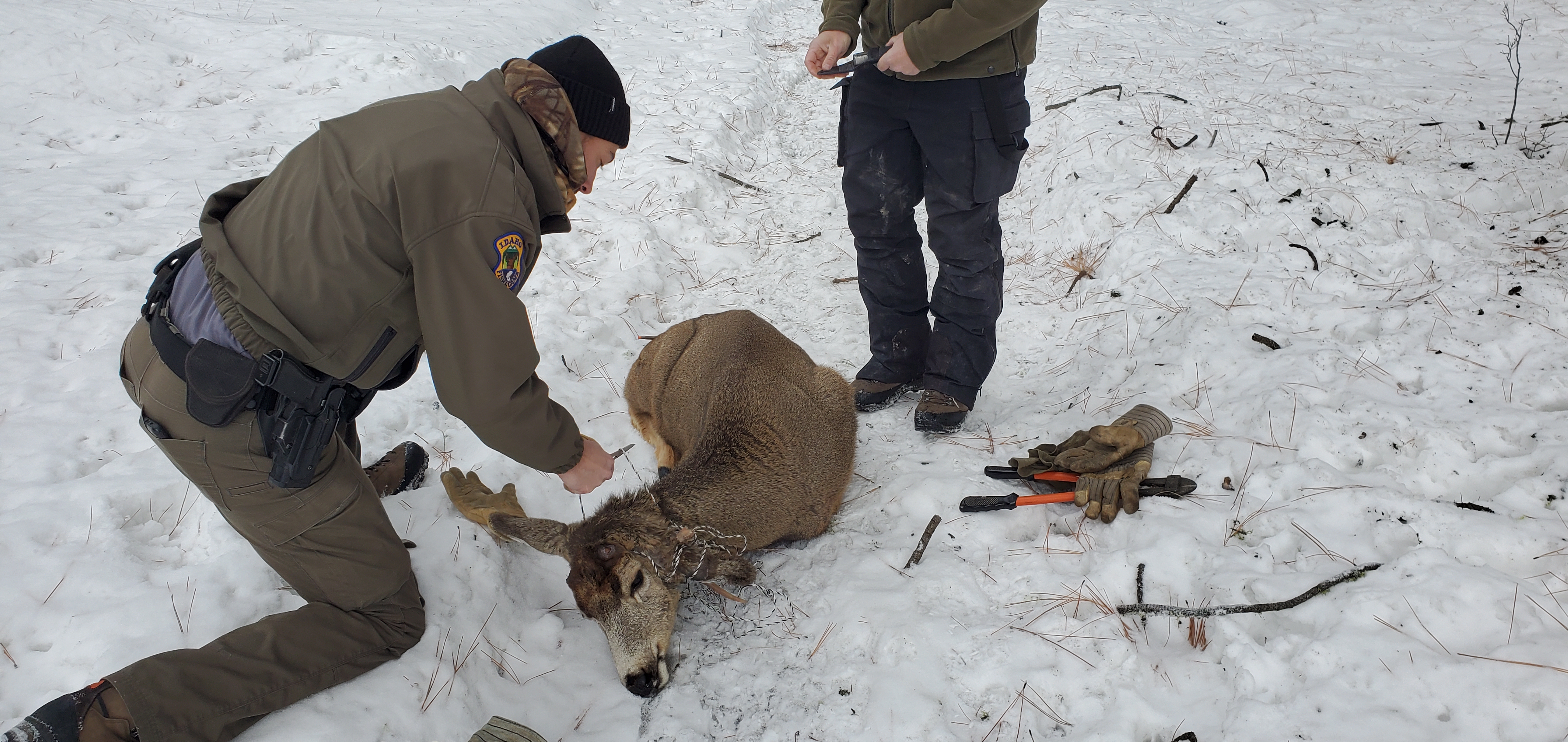Fish and Game completed a town deer survey in McCall in February and observed at least 258 deer in the city.

F&G biologists complete survey of town deer in McCall
The town deer survey confirmed some expectations, but also yielded a few surprises for Fish and Game wildlife biologists. Prior to the survey, Fish and Game staff predicted that town deer numbered between 150 and 200 animals, based on anecdotal observations. The survey results confirm that at least that many, and likely more, reside in McCall year-round.
What some of these wildlife professionals hadn’t expected, however, was the degree to which the deer had habituated to humans. During the survey, several staff experienced deer approaching them in their vehicles, obviously looking for the food handout to which they had become accustomed.

“While it’s not uncommon to see town deer that are relatively comfortable around humans, we expect them to still show some fear,” said Regional Wildlife Manager Regan Berkley. “We want these deer to behave like the wild animals they are, and this level of comfort can create public safety risks, as well as risks to the animals.”
Urban deer pose unique challenges throughout Idaho

Every year Idaho Department of Fish and Game fields hundreds of calls for service regarding deer in urban areas. Some people call to report deer that have become entangled in household or workplace items. Others are concerned about deer that appear to be sick, which is common among animals living in crowded conditions. There are also calls about injured deer, the causes ranging from automobile collisions to illegal shooting to altercations with dogs, and more. Finally, many callers are simply looking for someone to remove dead deer from their property.

Responding to these calls can strain limited agency resources. Recently, McCall Fish and Game staff have been taking a closer look at town deer. This includes cataloging calls about dead or injured deer, mapping feeding locations, and, most recently, estimating the number of deer that make McCall their home.
Traditional approaches don’t work for counting town deer
Putting a number on town deer is not a precise task. On winter ranges, Fish and Game conducts annual counts of deer and other wildlife using aerial survey methods and relies on computer models to account for unseen animals. Of course, helicopters aren’t appropriate for observing town deer, and no models exist for estimating their abundance. So, McCall Fish and Game staff opted for a basic driving-survey approach.
The first step was to define the area to be surveyed. Even casual observers can see that deer flow in and out of McCall. Neighborhoods adjacent to town, but outside city limits, form a large part of their home range. In the end, McCall was divided into four survey areas, approximately bounded by Boydstun and Spring Mountain Blvd.
Each survey area was patrolled three times, once in late 2022 and twice in 2023, by a pair of observers. Surveys were conducted simultaneously, and observer teams noted deer on the boundaries of their survey area. Deer were counted in total, but also categorized by sex and age class. This way staff could compare notes at the end of each survey and discount animals observed by multiple teams. A lot of real estate can’t be seen from the road, so observers knew they wouldn’t lay eyes on every deer and that resulting counts would represent a minimum number of town deer.
Classifying deer by bucks, does, and fawns provided an additional benefit. Known as herd composition, this data gives Fish and Game an indicator of population status, expressed as the number of fawns per 100 does. For deer management purposes, 60 fawns per 100 does represents a relatively stable herd. Estimates for wild deer in game management units near McCall have averaged around 61 fawns per 100 does over the last decade. McCall’s ratio of town fawns to does averaged at 102 fawns per 100 does. A true estimate of population growth or decline would require years of data, but this glimpse is interesting, nonetheless.
